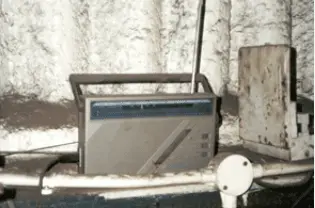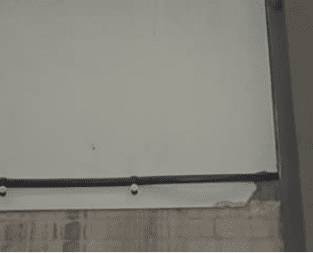The manufacture and supply of asbestos in the UK was banned completely in 2000. Prior to this, Blue (crocidolite) asbestos and Brown (amosite) asbestos were banned some 15 years earlier in 1985. So how dangerous is asbestos and is it still a problem?
Large amounts of asbestos were used in new and refurbished buildings before 2000. In its day, asbestos was something of a wonder product.
It had incredible heat and fire resistance properties, its resistance to electrical current surpassed many other products, and it was water and weather resistant among many other uses. In its solid state and undisturbed, asbestos causes no threat to health and will continue to do its job until such a time when the building or facility comes to the end of its serviceable life.
At that point the asbestos should be identified by a specialist survey and safely removed by a contractor authorised by the HSE using trained personnel.

The Risk From Asbestos to Health.
In its solid state and left undisturbed asbestos is unlikely to cause a problem to a person’s health. The problem comes about when asbestos is “disturbed” by unsuspecting maintenance or renovation workers from drilling, chipping off, dragging cables through walls and voids, removing doors or windows, decorating, or working on heating systems for example.
A large number of premises and older plant and equipment still contain some asbestos. Much of the asbestos will be hidden in the fabric of the building so is not immediately obvious. It is also unlikely to be recorded in the building plans but should be in the duty-to-manage plan.
Workers most likely to come into contact with ACMs (asbestos containing materials) are those in the construction, maintenance, refurbishment and related trades. When asbestos containing materials are damaged or disturbed they can release microscopic fibres which, if breathed in, can cause serious diseases over the long term.
Common Types of Asbestos Containing Materials (ACM’s)
1- How Dangerous Is Asbestos Loose Fill?
This can be found in both industrial and domestic premises, and can be found in loft spaces, inside cavity walls and under floors. It is a loose fluffy insulation material (similar to candyfloss), which may be blue-grey or off white in colour.
Loose fill is probably the most dangerous asbestos containing material. Loose fill is made up of pure asbestos and if disturbed can release large amounts of fibres into the air, where they can be breathed in.


DO NOT ATTEMPT TO WORK ON THIS UNLESS YOU ARE A LICENSED HSE CONTRACTOR
2- Lagging and Insulation
This type of asbestos has many different appearances and can be hard to spot if unfamiliar with the services it is being used to insulate. It is mostly a fibrous material which flakes and powders easily. When applied to pipes it is often covered in a protective coating or painted. This painted protective covering can be any colour which makes it more difficult for the unwary to spot.
It is mostly found in basements and boiler rooms of commercial buildings and schools, and in voids where large diameter pipework is routed. It can be around the pipework and in or on boilers and calorifiers (water heating vessels).




DO NOT ATTEMPT TO WORK ON THIS UNLESS YOU ARE A LICENSED HSE CONTRACTOR
3- How Dangerous Is asbestos Sprayed Coating?
This was applied as insulation on the underside of roofs, sides of buildings and in warehouses. It was also widely used as a fire protection layer on steel, reinforced concrete beams and columns and on the underside of floors.
When being applied, it was very easy to overspray or get a ‘splash back’ so there is likely to be splatter and clumps around the sprayed area.
Along with ‘Loose Fill’, this is one of the most dangerous asbestos containing materials as it contains up to 85% asbestos and breaks very easily. A minor disturbance of sprayed coatings can release large quantities of asbestos fibres into the air where they can be breathed in, and often this is in an enclosed area.
Often it is white or grey in colour with a rough surface, but it may have been overpainted any colour.




DO NOT ATTEMPT TO WORK ON THIS UNLESS YOU ARE A LICENSED HSE CONTRACTOR
4- Asbestos Insulating Board (AIB)
Asbestos Insulating Board was commonly used as fireproofing material in many commercial locations including kitchens, but it can also be found in domestic situations such as roof soffits.
Common uses for AIB’s were partition walls, panels in fire doors, lift shaft linings, ceiling tiles, soffits and panels below windows. This makes it difficult to spot AIB’s, as normal building items such as wall panels boards, ceiling tiles and plasterboard can look very similar to asbestos insulating board materials.
All asbestos containing materials can present a significant hazard, but AIB’s are considered less hazardous than loose fill or spray coating as the fibres are more densely packed and woven into other materials making wide spread release less likely if disturbed.
This is what the HSE has to say about AIB’s
“Work on any type of asbestos can be dangerous. However, some short duration work (less than 1 hour for 1 person in a 7 day period, not to exceed 2 hours spent by all workers) for small or minor tasks on AIB can be carried out by non-licensed workers who are appropriately trained.“
Short duration work to remove AIB as part of demolition or major refurbishment would be notifiable.
Any work lasting more than 1 hour for 1 person in a 7 day period, or more than 2 hours by all workers would require a licensed contractor.




5- Floor Tiles, Textiles and Other Uses
Asbestos floor tiles were a common choice for flooring. These can often be found hidden under carpets and look very similar to modern days plastic or vinyl floor tiles, except they are more brittle.
Textiles can be found in fuse boxes behind the fuse. Old fire blankets and heat resistant gloves can also be made out of asbestos textiles.
Many composites contain asbestos such as toilet cisterns and seats, window sills, bath panels, old plastic light switches.
Asbestos paper was used for lining under tiles and inside metal cladding.


This is what the HSE has to say about composites.
“Work on any type of asbestos can be dangerous. However, tasks on these particular materials can be carried out by non-licensed workers who are appropriately trained. Work on these materials would not normally be notifiable provided that the material is in good condition.“
“If the work is likely to cause significant break up and deterioration of the material then notification would be required.”
6- How Dangerous Is Asbestos Containing Textured Coating?
Textured coatings were used to produce decorative finishes on ceilings and walls. In the past, they have had various trade names such as ‘Artex’ and could be applied in various patterns and peaks. The texture is hard and originally white in colour. However, once dried it could be overpainted any colour.


This is what the HSE has to say about textured coatings.
“Work on any type of asbestos can be dangerous. However, work on textured coatings can be carried out by non-licensed workers who are appropriately trained. This work would generally not need to be notified.”
“If the work is likely to cause significant break up and deterioration of the material such as large scale removal using steaming or gelling methods, then notification would be required.”
HSE Guidance on drilling holes in non-licensed ACM’s READ HERE
7- Asbestos Cement
Asbestos cement is mainly a mixture of chrysotile (white asbestos) and cement, moulded and compressed to produce a range of asbestos cement products. You can find asbestos cement in many places inside and outside buildings such as:
Asbestos cement roofs.
These are mainly made up of large sheets of corrugated asbestos cement. They are often found on industrial or farmyard buildings, but can also be found as garage and shed roofs. They are often covered in moss and other growths as they’ve been there for many years.
Asbestos wall cladding.
This has a shape and structure similar to roof sheeting, and is often found on walls of buildings with asbestos cement roofs.
Asbestos downpipes, hoppers and gutters.
These are often attached at the end of cement roofs in warehouse type buildings.
Asbestos cement flues.
These may be found in boiler systems (including domestic) air conditioning and ventilation systems.
Asbestos cement and pitch fibre water and sewer pipes.
Drainage pipes, such as water and sewage pipes, were often made of pitch fibre. This is a lightweight and easy to handle material, made of wood cellulose impregnated with inert coal tar pitch. Asbestos cement was added to strengthen the material.




This is what the HSE has to say about asbestos cement products.
Work on any type of asbestos can be dangerous. Work with asbestos cement can be carried out by non-licensed workers who are appropriately trained. This work would generally not need to be notified.
“If the work is likely to cause significant break up and deterioration of the material e.g ‘dropping an asbestos cement roof’ then notification would be required.“
BECOME ASBESTOS SAVVY. GET CPD ACCREDITED ASBESTOS AWARENESS TRAINING. PROTECT YOURSELF AND YOUR EMPLOYEES.
Further Resources
Building, Maintenance and Allied Trades. Non-Licensed Asbestos Work
Credits.
Information courtesy of HSE resource common asbestos containing materials



